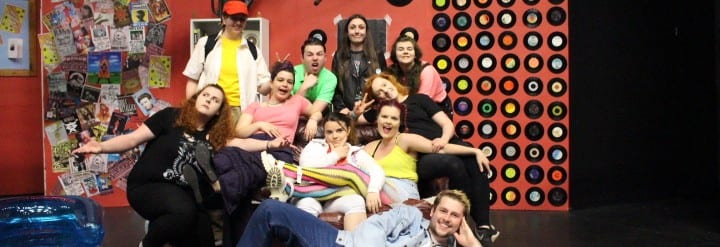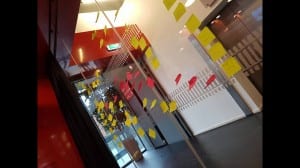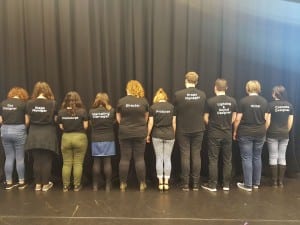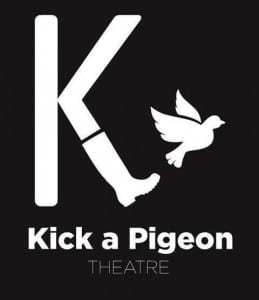Before our debut performance of Record ’97, I was aware that the piece was very comedic, however, having never performed it in front of an audience, I was not sure how much of it would be comical for an audience witnessing it for the first time, and how the audience would react to the different elements of comedy within the piece. During the performance, the audience had amazing reactions to the physical and verbal comedy throughout the piece, and even laughed at elements of the show that we as a company did think would get as big a reaction as it received on the night. This reaction from an audience was amazing for our first show, and gave a renewed energy to the performers and the performance as a whole.
In addition to this, all of the production elements within the piece blended together very well and created a smooth and seamless performance. Nothing felt out of place or unnecessary, and all of these elements contributed to an even better performance. The set, sound and light used within the piece created the nostalgic effect of the 1990’s whilst informing the audience of the time period. The news broadcasts worked very well as a way of showing that, whilst the play is displaying the stories of the characters within the record store, the world around them is still moving, and is still imposing itself upon them, and I feel that during the performance this was displayed in a very effective manner and was translated to the audience very effectively.
During my time as director, I have learnt a lot, but I would say that one of the main comments that stuck by me during the entire process was “never underestimate the intelligence of your audience. I believe that the audience like to work for their laughter” (Cooney, 2014). Whilst this comment is about farcical comedies, I believe that this can be applied to any genre of performance, and can also be useful for both performers and directors. With a comedy, it is very easy to create generic humour through some of the physical movements overused lines and gags and I believe we managed to effectively stay away from these, using the characters that we had created and developed to create the comical elements within the show.
In addition, I feel that everyone’s character was very well developed and portrayed on stage. As director, I had individual meetings with each member of the cast to develop their characters beyond what was stated within the writing. I worked with each cast member to ensure the intentions of the character during each scene was clear for the actor, and I feel that this development meant that the piece was given more life, and the characters really became three-dimensional.
If Kick a Pigeon were to continue in the future, our first steps would be to apply for Arts Council England funding, and also to scale down the set of the show in order to both lower the cost of the production, but also to make it easier to transport between venues whilst on tour.
Works Cited: Cooney, R. (2014) Ray Cooney’s Six Rules of Farce. London: Telegraph. Available from:
http://www.telegraph.co.uk/culture/theatre/10688416/Ray-Cooneys-six-rules-of-farce.html [accessed 26th May 2017]
Noble, R. (2017)




